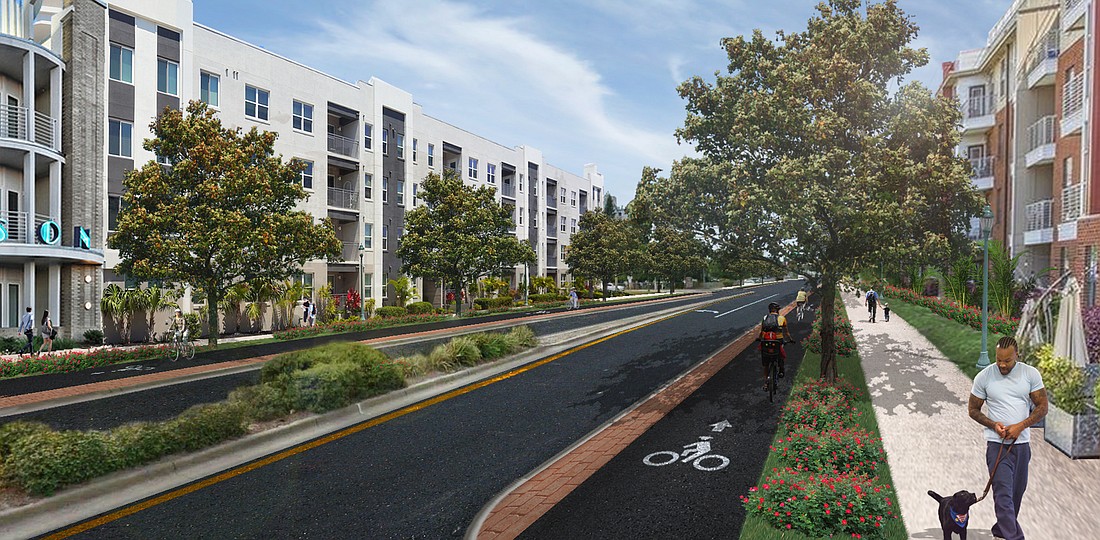- December 26, 2024
-
-
Loading

Loading

Transportation planning is a long-term process.
On Feb. 16, the City Commission finalized a list of 24 future transportation projects, ranked by priority and submitted to the Sarasota-Manatee Metropolitan Planning Organization for funding consideration. Even the top-ranked projects on that list — construction-ready initiatives that have already gotten some funding — are likely at least five years away from receiving additional money from the regional transportation agency.
For projects in design or conceptual phases, the wait will probably be even longer. An effort to improve multimodal infrastructure on 12th Street between U.S. 41 and Tuttle Avenue — ranked No. 23 on the city’s priority list — isn’t targeted to be built until 2040 in the MPO’s long-range transportation plan.
“It can take a very long time to see a project go from idea to construction,” said Colleen McGue, the city’s chief transportation planner.
The MPO is a key resource for local governments pursuing transportation improvements, helping the Florida Department of Transportation identify which projects will receive state and federal funding. That’s why city staff developed a longer-than-usual list of priorities to submit to the MPO for consideration.
Even though some of the items on the list are more than a decade away from becoming reality, McGue said staff wanted to get the projects into the MPO’s queue now, in part to get some insight into how the agency evaluates the city’s plans.
The rankings a local government provides are just one factor the MPO considers as it evaluates which projects should be prioritized. Projects are also scored based on how they align with MPO priorities, such as safety, infrastructure condition, effects on mobility and environmental impact. An effort to redesign Main Street between U.S. 41 and U.S. 301 was ranked 18th on the city’s priority list, but McGue said it could be competitive for funding because the MPO had identified Main Street as a high-crash corridor, which would make the agency interested in safety improvements.
Staff first presented a project priority list to the commission for consideration on Feb. 1. The commission declined to approve the list at that meeting, expressing a desire to re-sort the ranking based on the preferences of individual board members. Although staff rearranged the list ahead of the Feb. 16 meeting, direct input from commissioners didn’t influence the new project hierarchy. McGue said only two commissioners submitted an individual ranking, and because their priorities conflicted with each other, city administration did not incorporate it into the list.
Instead, staff used more generic criteria. Items the city had previously submitted to the MPO moved to the top of the list, as did “shovel-ready” projects. Staff also considered whether a project had received some funding in the past and whether a project would improve safety or expand the city’s trail network.
At the Feb. 16 meeting, individual commissioners highlighted some individual projects they would like to see moved up in the city’s rankings. Commissioner Jen Ahearn-Koch mentioned trail connections between the bayfront and north Sarasota, the Main Street redesign, raised crosswalks on St. Armands Circle and a School Avenue multiuse recreational trail. Commissioner Liz Alpert asked about complete street projects on 10th Street and Boulevard of the Arts. Vice Mayor Erik Arroyo expressed his support for a Shade Avenue complete street project and a trail connection between the Legacy Trail and Bobby Jones Golf Club. Mayor Hagen Brody said he believed the Main Street redesign and a north Sarasota Legacy Trail connection should be higher priorities.
Ultimately, though, the commission moved to adopt staff’s proposed list as is. McGue noted that, although the MPO does consider local government rankings, the top three projects receive the most benefit. Projects lower in the list get compared to similar projects in the region and judged through the MPO scoring system.
“Our ranking is important, but they have their own criteria they are looking at for each of the pots of funding, too,” McGue said.
Although the city uses MPO and state funding to pay for transportation initiatives that can cost millions of dollars, it’s not wholly reliant on those agencies to advance projects. McGue noted the city is beginning the process of putting together a budget for fiscal year 2022, and the city’s Capital Improvements Plan provides another platform for officials to identify transportation-related priorities.
McGue said the priority list also has applications outside of the context of the MPO’s routine planning process. If funding unexpectedly becomes available — such as through a federal infrastructure bill — McGue said the city can be more competitive if it’s already identified the projects it’s most eager to undertake.
“It’s good to have our list of, ‘Here’s what we want to do,’” McGue said.